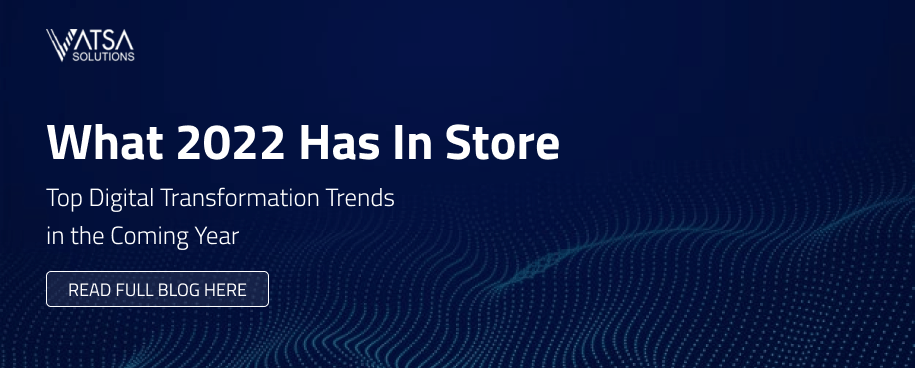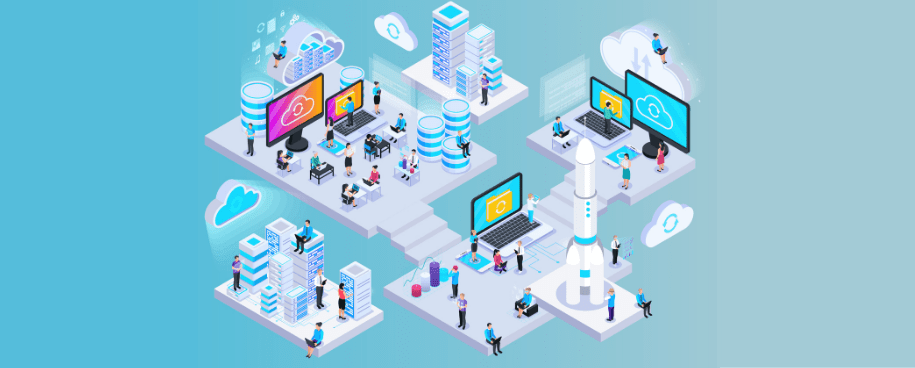Since the beginning of the pandemic, the learning industry’s focus has largely moved to making education available as per the learners’ needs and demands. While cloud platforms have been around since before the pandemic, the last couple of years have seen increased adoption of cloud solutions to make education more accessible. The hybrid and remote learning models combined with digital learning courses have accelerated the use of cloud computing. Since 2020, 75% of schools have planned to operate online, and 98% of universities have moved classes online.
Suggested Read: Choosing the right Cloud service provider for your business
Cloud technology, with its remote servers, massive data storage, database systems, networking, data analytics, and integration with various technologies, has unlocked the true potential of learning and teaching.
Educators can conduct learning sessions online via multiple programs, and students can attend the sessions sitting in any corner of the world. With minimal human effort, a decentralized sharing method, better collaboration and communication, and pushing geographical barriers, the cloud has quickly become the most powerful and widely used technology in the learning industry, impacting students, teachers, and staff alike.
Impact on Learners
Cloud has unlocked flexibility and innovative learning experiences for learners today. With centralized data storage accessible remotely, learners can access learning resources easily. With Cloud technology’s ability to adapt to new technology innovations such as AR/VR, AI/ML, and more, it’s possible to conduct science experiments or walk through a historical site using VR goggles with minimal resources, maximum physical safety, and in the comfort of your home. AI capabilities intertwined with the Cloud unlock a plethora of interactive, scalable, immersive learning experiences, have maximum knowledge retention, and a higher completion rate. For instance, ML-based learning makes the content relevant to the learner and helps the user choose their learning style, thus enhancing the learning experience and outcome. Moreover, cloud solutions bring more efficiency to in-person learning, collaboration, and assessment and feedback models.
Impact on Educators
Educators can develop and modify cloud-based e-learning systems and learning modules based on the learners and as per each learner’s needs. Data modernization with the Cloud provides remote, instant, unbiased, and meaningful feedback and assessment to the learners. Additionally, an AI-driven Cloud helps educators address the weaknesses, setbacks, and areas of improvement the learners face when completing a course.
Data analytics provides deep insight into the learner’s performance and makes it possible to enhance the user’s learning style. Educators can even add new learning materials and administrators’ new features easily and at a much lower cost. For instance, hosting a virtual webinar on the current trending topic in the industry is cost-effective as it makes less use of the physical infrastructure and experts don’t need to relocate to conduct it. Cloud-based systems also limit challenges like crashing the system and make the data available for learners and educators with peace of mind.
Suggested Read: Six ways AI is transforming the EdTech sector
Impact on Organizational Efficiency
Across all industries, the cloud has boosted organizational efficiency and productivity and helped cut down on unnecessary expenses. In the educational sector, in addition to quick-paced, comfort-oriented, innovative learning environments, the Cloud has benefited the administrative, research and development, and many other divergent activities. The pay-as-you-go model is not only cost-effective but also caters to the specific needs of the institution. Unlike legacy systems, the cloud encrypts the data during migration, making the data secure from cyber threats and data breaches. This also helps organizations meet compliance requirements. With appropriate cybersecurity features installed, the sensitive information of the staff and students can’t be accessed without permission.
Final Word
The accelerated adoption of the Cloud is expanding with each passing day as new technical discoveries are made and advances in technology happen. Similarly, the education domain too will witness massive expansion and evolution as organizations leverage cloud technology to its full potential. As the cloud makes learning more accessible and flexible, it will continue to transform learning spaces in a positive manner. The Cloud provides educators and educational organizations with an opportunity to add value to the global learning community and expand their reach.
To learn more about implementing the cloud for your organization, write to us today at [email protected].








